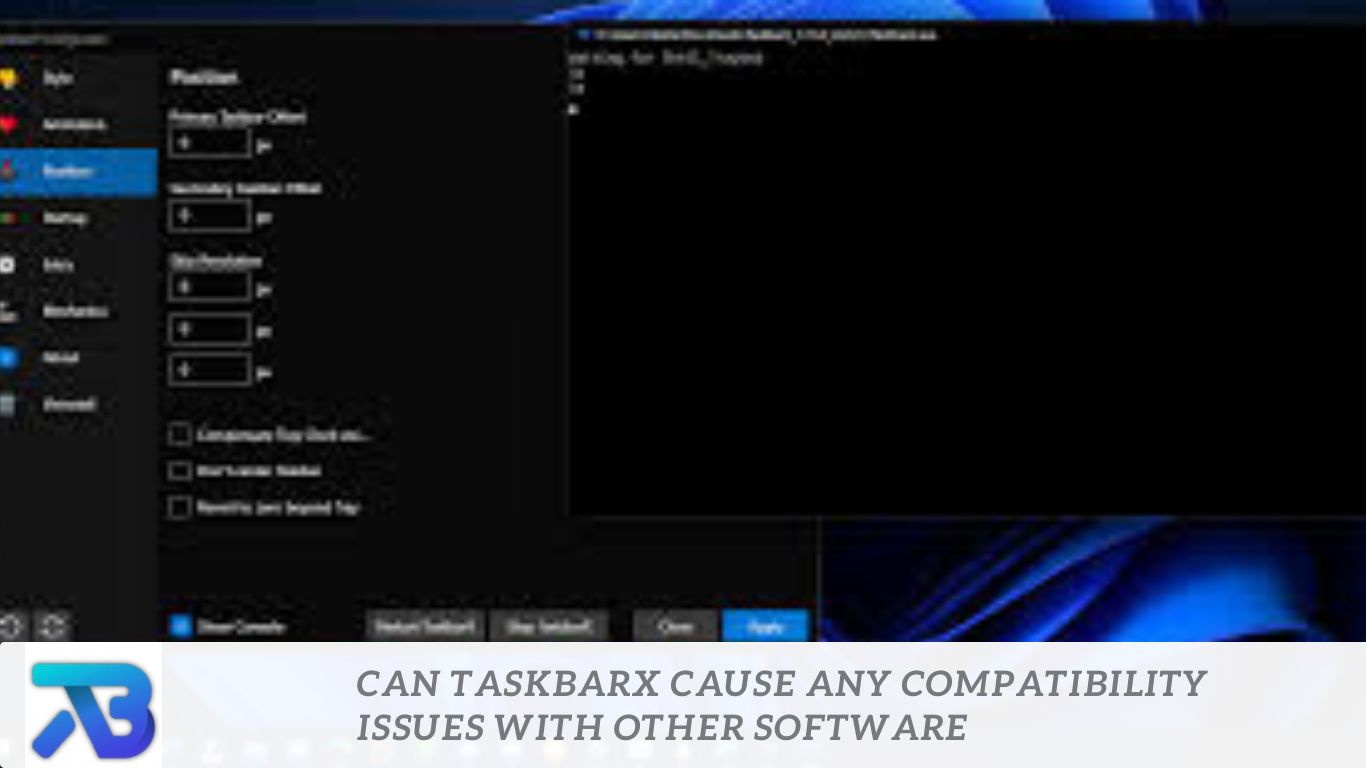TaskbarX has emerged as a popular tool for customizing the Windows taskbar, offering users enhanced aesthetics and functionality. However, as with any software modification, concerns arise regarding potential compatibility issues with other programs. In this comprehensive guide, we delve into the question: Can TaskbarX peacefully coexist with other software, or are there compatibility hurdles to navigate?
While TaskbarX undoubtedly offers tantalizing customization possibilities, the journey toward seamless compatibility is challenging. From conflicts with antivirus software to potential clashes with graphic card drivers, understanding the nuances of TaskbarX compatibility is paramount to ensuring a smooth and hassle-free user experience.
Understanding TaskbarX
Before addressing compatibility concerns, it’s essential to grasp the fundamentals of TaskbarX. Developed by Chris Andriessen, TaskbarX is a utility designed to customize the appearance and behavior of the Windows taskbar. Its features include centering icons, adjusting transparency, implementing dynamic effects, and elevating the visual appeal of the desktop environment.
Exploring Compatibility Challenges
Despite its popularity, TaskbarX resists compatibility issues, particularly when integrated with third-party software. These challenges may manifest in various forms, such as conflicts with system processes, interference with application functionalities, or unintended visual glitches. To clarify, let’s explore potential compatibility challenges and how to address them.
1: Conflicts with Antivirus Software
Antivirus programs are essential for safeguarding systems against malware threats. However, they may perceive TaskbarX modifications as suspicious behavior, triggering false positives or interfering with its operation. To mitigate this issue, users can allow TaskbarX in their antivirus settings or temporarily turn off real-time protection during installation.
2: Interference with System Utilities
Certain system utilities, such as task managers or system monitoring tools, may experience conflicts with TaskbarX modifications. These conflicts can result in erratic behavior, performance degradation, or system instability. Users encountering such issues should prioritize compatibility testing or consider alternative customization tools compatible with existing utilities.
3: Graphic Card Drivers and Rendering Issues
TaskbarX relies on graphical rendering to implement visual enhancements, making it susceptible to conflicts with graphic card drivers or rendering frameworks. Incompatibilities may lead to visual artifacts, rendering glitches, or performance degradation. Updating graphic card drivers to the latest version and adjusting rendering settings can help alleviate these issues.
4: Application-Specific Compatibility Concerns
Specific applications, particularly those heavily reliant on the Windows taskbar for functionality, may exhibit compatibility issues with TaskbarX modifications. Common symptoms include obscured controls, dysfunctional taskbar previews, or erratic window behavior. Users encountering such issues should explore compatibility modes or seek alternative customization solutions.
Addressing Compatibility Concerns
While compatibility issues with TaskbarX are conceivable, proactive measures can mitigate their impact and ensure seamless coexistence with other software. Implementing the following strategies can help users navigate compatibility challenges effectively:
Regular Updates: Stay abreast of TaskbarX updates and install them promptly to benefit from bug fixes, performance enhancements, and compatibility improvements.
Compatibility Testing: Prioritize compatibility testing when integrating TaskbarX with other software, particularly critical applications or system utilities.
Community Support: Leverage online forums, user communities, or developer resources to seek assistance, share experiences, and troubleshoot compatibility issues effectively.
Alternative Solutions: Explore alternative customization tools or methodologies if compatibility issues persist or significantly impact productivity.
Frequently Asked Questions
What is TaskbarX?
TaskbarX is a utility designed to customize the appearance and behavior of the Windows taskbar. It offers features such as icon centering, transparency adjustments, and dynamic effects, enhancing the visual appeal of the desktop environment.
Can TaskbarX cause compatibility issues with other software?
While TaskbarX enhances the Windows taskbar’s aesthetics and functionality, it may encounter compatibility issues when integrated with specific third-party software. These issues can manifest as conflicts with antivirus programs, interference with system utilities, or rendering glitches with graphic card drivers.
How do conflicts with antivirus software affect TaskbarX?
Antivirus programs may perceive TaskbarX modifications as suspicious behavior, leading to false positives or interference with its operation. Users can mitigate this issue by allowing TaskbarX in their antivirus settings or temporarily turning off real-time protection during installation.
What types of conflicts might occur with system utilities?
Certain system utilities, such as task managers or system monitoring tools, may experience conflicts with TaskbarX modifications. These conflicts can result in erratic behavior, performance degradation, or system instability. Users encountering such issues should prioritize compatibility testing or explore alternative customization tools.
How can graphic card drivers impact TaskbarX compatibility?
TaskbarX relies on graphical rendering to implement visual enhancements, making it susceptible to conflicts with graphic card drivers or rendering frameworks. Incompatibilities may lead to visual artifacts, rendering glitches, or performance degradation. Updating graphic card drivers and adjusting rendering settings can help alleviate these issues.
Are there compatibility concerns with specific applications?
Specific applications, particularly those heavily reliant on the Windows taskbar for functionality, may exhibit compatibility issues with TaskbarX modifications. Symptoms include obscured controls, dysfunctional taskbar previews, or erratic window behavior. Users encountering such issues should explore compatibility modes or seek alternative customization solutions.
Conclusion
TaskbarX undoubtedly enriches the Windows desktop experience, offering users unprecedented customization options. However, compatibility concerns loom large like any software modification, necessitating proactive measures and diligent oversight. By understanding potential compatibility challenges and implementing targeted strategies, users can harness the full potential of TaskbarX while fostering harmonious coexistence with other software components.
Through our exploration, we’ve uncovered the potential challenges when integrating TaskbarX with existing software infrastructure. From conflicts with antivirus programs to rendering issues with graphic card drivers, the journey toward compatibility is rife with obstacles. However, armed with proactive measures and a nuanced understanding of compatibility dynamics, users can navigate these challenges adeptly, ensuring a harmonious coexistence between TaskbarX and other software applications.

